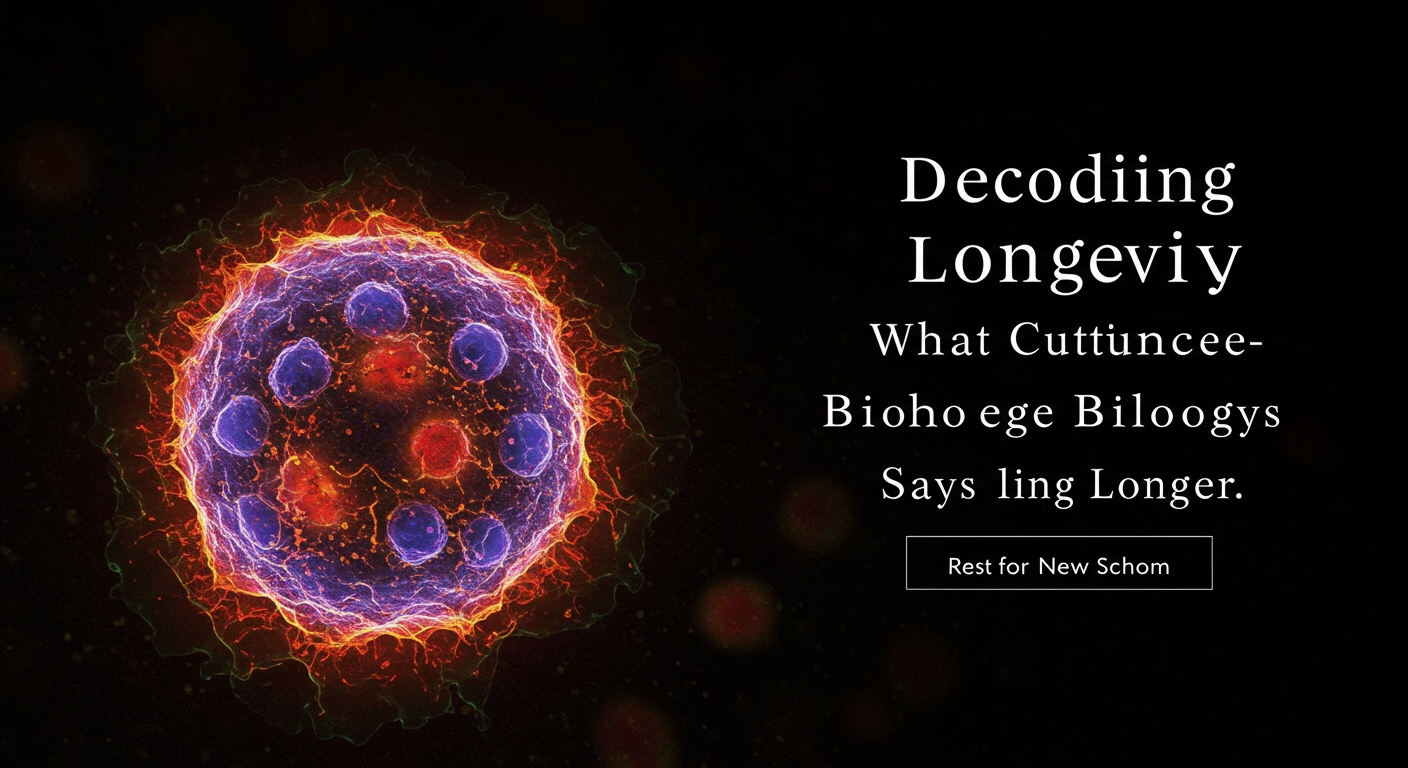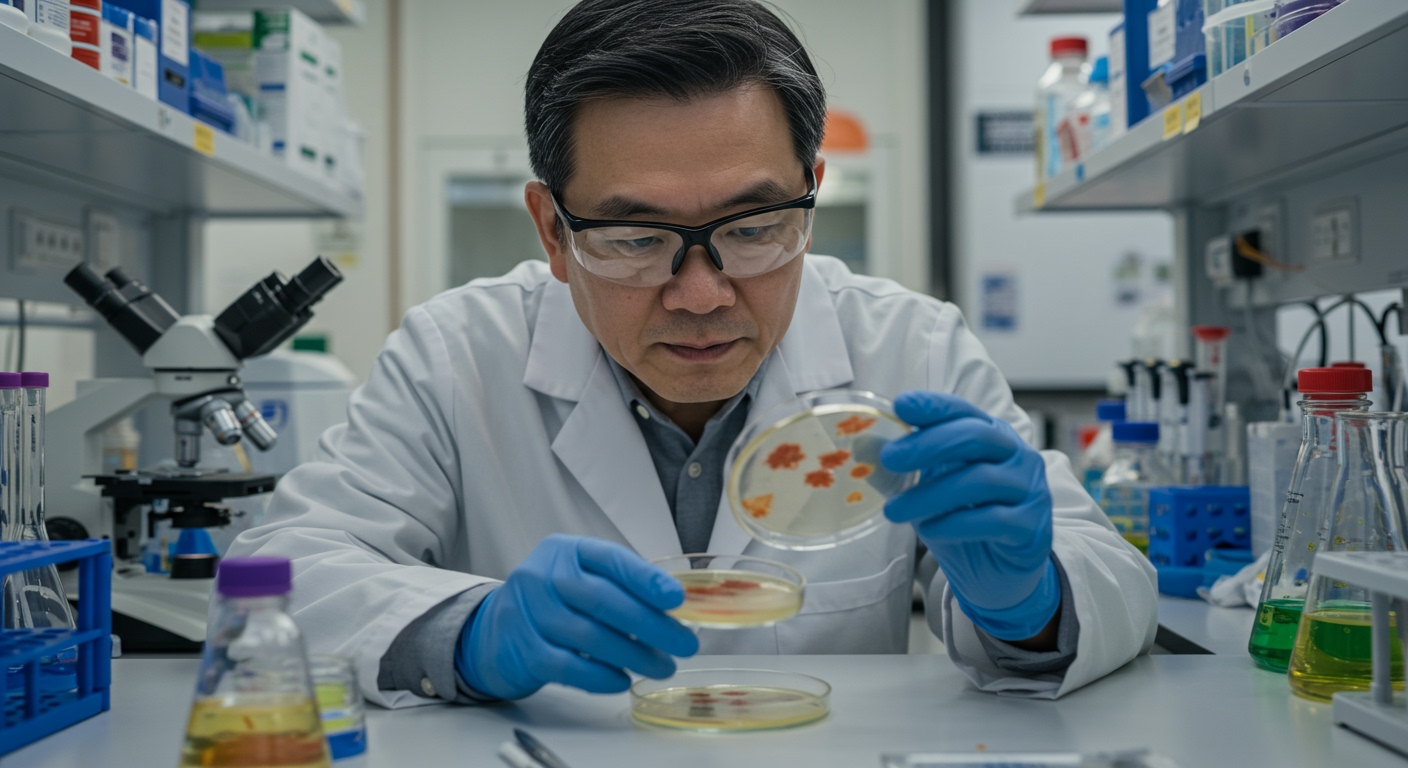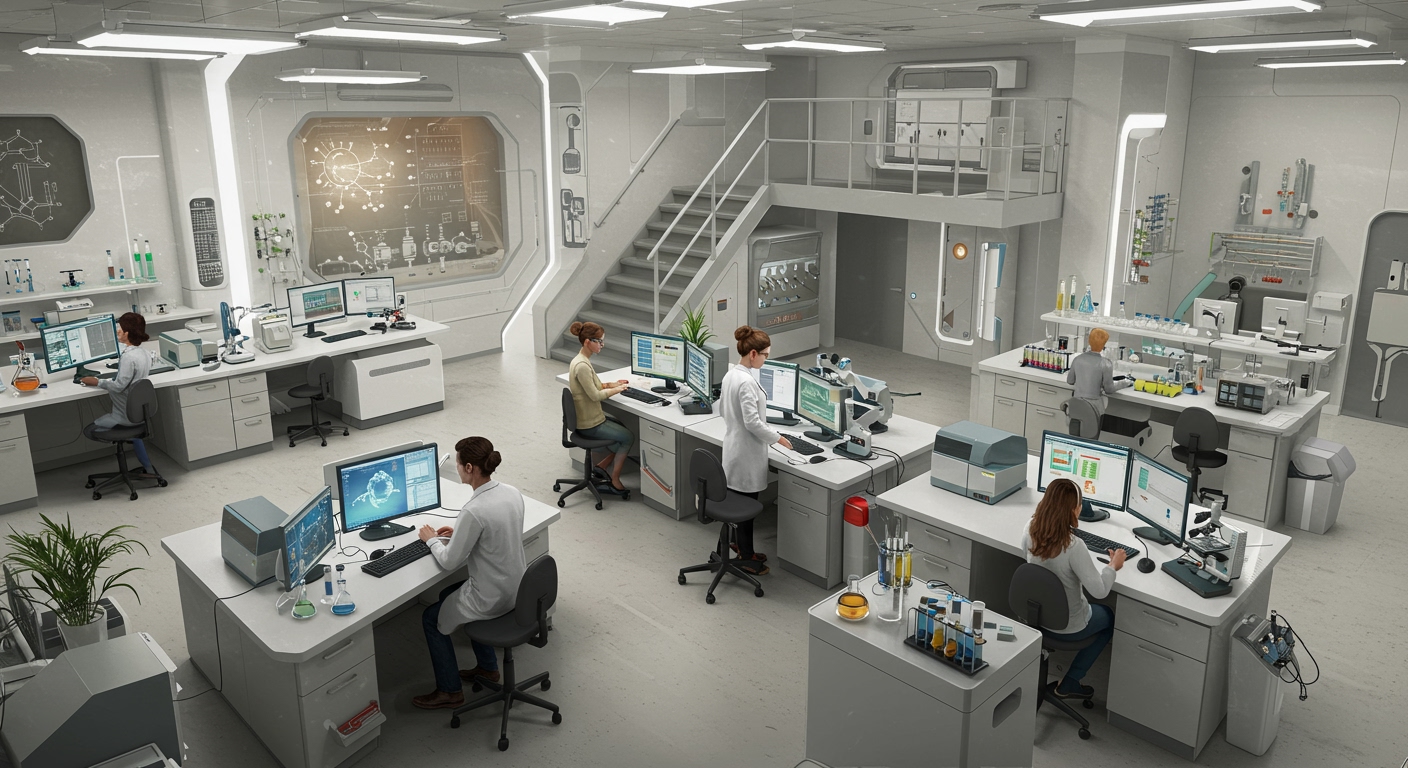Decoding Longevity: What Cutting-Edge Biology Says About Living Longer
Decoding Longevity: What Cutting-Edge Biology Says About Living Longer
Explore cutting-edge biology’s insights into human longevity. Learn about aging hallmarks, genetic pathways, emerging therapies, and lifestyle factors extending healthspan.
Key Points
- Longevity science, or geroscience, is moving beyond observation to actively intervene in the aging process at molecular and cellular levels.
- The ‘Hallmarks of Aging’ provide a framework for understanding and targeting the fundamental drivers of age-related decline.
- Key molecular pathways like sirtuins, mTOR, and AMPK are central to regulating lifespan and are targets for new interventions.
- Emerging therapies include senolytics, NAD+ precursors, and research into gene therapy and epigenetic reprogramming.
- While scientific interventions advance, lifestyle factors such as diet, exercise, quality sleep, and stress management remain critical for healthy aging and longevity.
- The future of longevity research points towards personalized medicine, early detection, and addressing the ethical implications of extended healthspans.
Introduction to Longevity Science
The quest for a longer, healthier human lifespan has captivated humanity for millennia. Historically, this pursuit was largely confined to philosophical musings or speculative fiction. However, recent decades have witnessed a dramatic shift, transforming longevity from a dream into a tangible scientific endeavor. Cutting-edge biology is now meticulously dissecting the intricate mechanisms of aging, offering unprecedented insights into how we might extend our healthspan—the period of life spent in good health—and even lifespan itself.
This burgeoning field, often termed geroscience, operates at the intersection of genetics, molecular biology, pharmacology, and clinical research. Researchers are no longer merely observing the effects of aging but actively intervening at the cellular and molecular levels, identifying key pathways that drive the aging process. The ambition is not simply to add years to life, but to add life to years, ensuring that extended lifespans are accompanied by vitality and freedom from age-related diseases.
The progress in understanding the fundamental processes of aging has been revolutionary. From identifying genetic variants associated with exceptional longevity to developing compounds that target specific aging pathways, science is rapidly advancing. This article delves into what cutting-edge biology reveals about the potential for living longer, healthier lives, exploring the breakthroughs, challenges, and future prospects of this transformative field.
The Hallmarks of Aging
A pivotal development in geroscience has been the identification of the ‘Hallmarks of Aging.’ These are a set of cellular and molecular changes that are considered to be the primary drivers of the aging process. Initially proposed in 2013, these hallmarks provide a conceptual framework for understanding the complex interplay of factors that contribute to age-related decline and disease. Targeting these hallmarks forms the basis of many contemporary longevity interventions.
The initial nine hallmarks include genomic instability, telomere attrition, epigenetic alterations, loss of proteostasis, deregulated nutrient sensing, mitochondrial dysfunction, cellular senescence, stem cell exhaustion, and altered intercellular communication. Each of these represents a critical pathway that, when disrupted, accelerates aging. For example, genomic instability refers to the accumulation of DNA damage over time, while cellular senescence describes cells that stop dividing but remain metabolically active, secreting inflammatory molecules.
Understanding these hallmarks allows researchers to develop targeted interventions. Instead of treating individual age-related diseases separately, the goal is to address the underlying aging processes that make individuals susceptible to these diseases in the first place. This holistic approach holds the promise of simultaneously mitigating multiple age-related conditions, from cardiovascular disease to neurodegeneration.

“Aging is not a disease, but it is the biggest risk factor for almost all human diseases.”
Genetic and Molecular Pathways to Longevity
Decades of research have uncovered specific genetic and molecular pathways that profoundly influence longevity across various species, from yeast and worms to mice and, increasingly, humans. These pathways often involve nutrient sensing and stress response mechanisms, suggesting that organisms have evolved sophisticated systems to adapt to environmental challenges, and these adaptations can influence lifespan.
One of the most intensely studied pathways involves the sirtuins, a family of protein deacetylases. Sirtuins are NAD+-dependent enzymes that play crucial roles in metabolism, DNA repair, and gene expression. Activation of sirtuins, often through caloric restriction or specific compounds, has been shown to extend lifespan in various model organisms. This has led to the development of sirtuin-activating compounds as potential anti-aging interventions.
Another key pathway is the mechanistic target of rapamycin (mTOR) pathway. mTOR is a central regulator of cell growth, metabolism, and aging. Inhibition of the mTOR pathway, notably by the drug rapamycin, has consistently demonstrated lifespan extension in diverse organisms, including mammals. Rapamycin works by modulating protein synthesis and autophagy, a cellular recycling process that removes damaged components.
The AMP-activated protein kinase (AMPK) pathway is also critical. AMPK is an energy sensor that is activated during low energy states, such as exercise or caloric restriction. Its activation promotes catabolic processes and inhibits anabolic processes, shifting cells towards energy conservation and repair. Drugs like metformin, commonly used for type 2 diabetes, are thought to exert some of their beneficial effects partly through AMPK activation.
Beyond these, the insulin/IGF-1 signaling pathway is another deeply conserved pathway linked to aging. Reduced signaling through this pathway often correlates with increased longevity, suggesting a balance between growth and maintenance processes is crucial for a long life.
Emerging Therapies and Interventions
Building on the understanding of aging hallmarks and pathways, a new generation of pharmacological and therapeutic interventions is emerging. These approaches aim to directly target the aging process rather than just its downstream effects.
Senolytics and Senomorphics: One exciting area is the development of senolytics—drugs that selectively destroy senescent cells. By clearing these ‘zombie cells’ that accumulate with age and contribute to inflammation and tissue dysfunction, senolytics show promise in treating a range of age-related conditions, including idiopathic pulmonary fibrosis and osteoarthritis. Senomorphics, on the other hand, modulate the phenotype of senescent cells without necessarily killing them.
NAD+ Precursors: Nicotinamide adenine dinucleotide (NAD+) is a vital coenzyme involved in hundreds of cellular processes, including energy metabolism and DNA repair. NAD+ levels decline with age, and supplementing with NAD+ precursors like nicotinamide mononucleotide (NMN) or nicotinamide riboside (NR) has shown rejuvenating effects in animal studies, improving mitochondrial function and muscle health.

Gene Therapy and Epigenetic Reprogramming: While still largely experimental for human longevity, advances in gene editing technologies like CRISPR offer the potential to correct age-related genetic defects or even introduce genes associated with longevity. Epigenetic reprogramming, which involves resetting the ‘epigenetic clock’ by modifying gene expression patterns without altering the underlying DNA sequence, is another frontier with profound implications for reversing cellular aging.
Drug Repurposing: Several existing drugs, such as metformin, rapamycin, and aspirin, are being investigated for their potential anti-aging properties beyond their primary indications. Their long safety records and known mechanisms make them attractive candidates for geroscience research.
Lifestyle and Environmental Factors
While cutting-edge biology explores molecular interventions, it’s crucial to remember that lifestyle and environmental factors remain profoundly influential in human longevity. These factors interact with our genetics and molecular pathways, shaping our health trajectory.
Diet and Nutrition: Caloric restriction without malnutrition has been consistently shown to extend lifespan in various organisms, and studies in humans suggest similar benefits for healthspan. Intermittent fasting and specific dietary patterns, such as the Mediterranean diet, are also associated with reduced risk of age-related diseases and increased longevity. The quality of food, rather than just quantity, plays a critical role in providing essential nutrients and reducing inflammatory processes.
Physical Activity: Regular exercise is a cornerstone of healthy aging. It improves cardiovascular health, maintains muscle mass and bone density, boosts cognitive function, and reduces systemic inflammation. Exercise activates many of the same beneficial pathways targeted by longevity drugs, such as AMPK and sirtuins, highlighting its potent anti-aging effects.
Sleep Quality: Adequate and restorative sleep is essential for cellular repair, hormone regulation, and cognitive function. Chronic sleep deprivation is linked to accelerated aging processes and increased risk of age-related diseases, underscoring the importance of prioritizing good sleep hygiene.
Stress Management and Mental Well-being: Chronic stress can have detrimental effects on cellular health, accelerating telomere shortening and increasing oxidative stress. Practices like mindfulness, meditation, and strong social connections are linked to better mental health and can contribute to overall longevity by mitigating the negative impacts of stress.

The Future of Longevity Science
The field of longevity science is accelerating at an unprecedented pace. The future promises even more sophisticated approaches, moving beyond broad interventions to highly personalized strategies. Advances in artificial intelligence and machine learning are enabling researchers to analyze vast datasets, identifying new biomarkers of aging and predicting individual responses to interventions.
Precision medicine will play a crucial role, allowing tailored interventions based on an individual’s unique genetic makeup, epigenetic profile, and lifestyle. Early detection and prevention of age-related decline will become more commonplace, shifting the paradigm from treating diseases after they manifest to preventing them altogether.
Ethical considerations will also come to the forefront. As the prospect of extended healthspans becomes more realistic, societal discussions about equity, resource allocation, and the implications for social structures will intensify. The goal of geroscience is to ensure that the benefits of longevity are accessible and contribute to a healthier, more productive global population.
Conclusion
Cutting-edge biology has fundamentally reshaped our understanding of aging, transforming it from an inevitable decline into a malleable biological process. Through the identification of the hallmarks of aging, the elucidation of key molecular pathways, and the development of targeted interventions, scientists are steadily unlocking the secrets to living longer, healthier lives.
While pharmacological and genetic interventions hold immense promise, the foundational role of lifestyle factors remains paramount. The synergy between scientific breakthroughs and daily healthy habits offers the most comprehensive path toward extending both lifespan and healthspan. The journey to decode longevity is ongoing, promising a future where aging is not merely endured but understood, managed, and ultimately, defied.
Frequently Asked Questions
What are the ‘Hallmarks of Aging’?
The Hallmarks of Aging are a set of fundamental cellular and molecular processes that are considered the primary drivers of aging. They include genomic instability, telomere attrition, epigenetic alterations, loss of proteostasis, deregulated nutrient sensing, mitochondrial dysfunction, cellular senescence, stem cell exhaustion, and altered intercellular communication. Understanding these hallmarks helps scientists develop targeted anti-aging interventions.
Which molecular pathways are central to longevity research?
Cutting-edge biology identifies several key molecular pathways, including the sirtuin pathway (involved in metabolism and DNA repair), the mTOR pathway (a central regulator of cell growth), and the AMPK pathway (an energy sensor). Modulating these pathways through drugs or lifestyle changes can influence longevity.
What are some of the most promising emerging therapies for extending human healthspan?
Emerging therapies include senolytics (drugs that clear ‘senescent’ or ‘zombie’ cells), NAD+ precursors (supplements that boost cellular energy), and potentially gene therapy or epigenetic reprogramming. Drug repurposing of existing medications like metformin and rapamycin is also a significant area of research.








